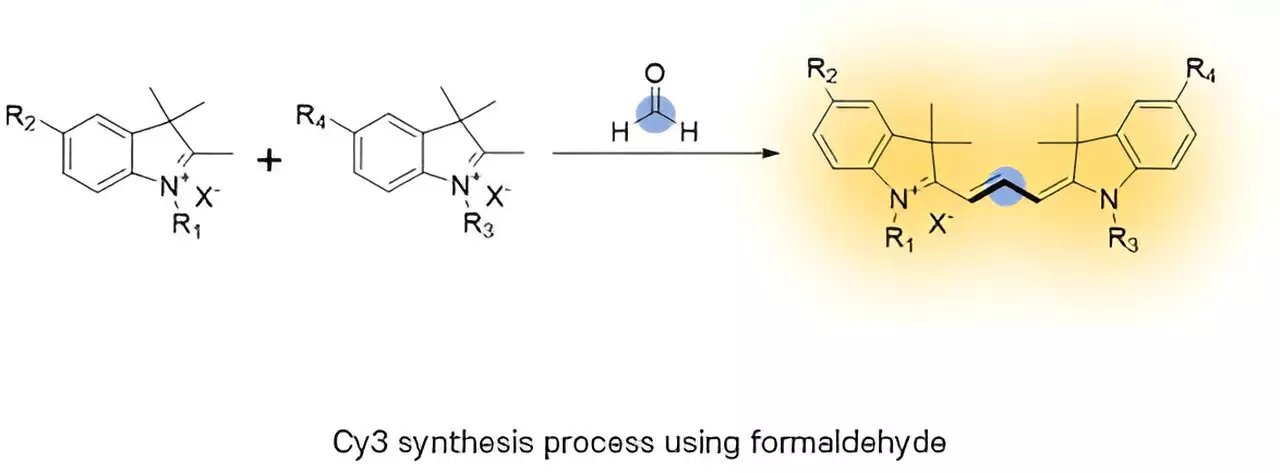Organic fluorophores play an essential role in various scientific fields, notably in medical diagnostics and bioimaging. They have become invaluable tools for tracking cancer cells and conducting genetic analysis. However, the challenges surrounding their synthesis often hinder advancements in these areas. The traditional methods involve complex synthetic routes that are not only costly but also yield numerous byproducts, leading to inefficiencies in the process.
A Breakthrough Methodology
Recently, a pioneering research team led by Professor Young-Tae Chang and Dr. Sun Hyeok Lee at POSTECH has reported a significant advancement in the synthesis of trimethine cyanine (Cy3), a widely used organic fluorophore. The methodology centers around the use of formaldehyde, a simple and ubiquitous carbon-based molecule. By substituting the traditional, more complex compounds with formaldehyde (HCHO)—composed of a single carbon atom, two hydrogen atoms, and one oxygen atom—the team has effectively streamlined the synthesis process.
This innovative approach not only simplifies the chemical landscape but also enhances the atom efficiency of Cy3 synthesis. Previously, the synthesis of Cy3 faced limitations due to its reliance on high molecular weight compounds leading to problematic byproducts. The research team’s use of formaldehyde allows for a reduction in molecular weight while notably improving atomic efficiency, thereby minimizing waste and resource consumption.
Another remarkable aspect of this breakthrough is the transition from a multi-step asymmetric synthesis to a one-pot reaction, which significantly boosts the synthetic efficiency. This transition could revolutionize the way scientists approach organic synthesis, simplifying protocols and making the production of Cy3 more feasible and cost-effective.
Moreover, the team’s exploration of the practicality of this method extends beyond laboratory experiments. They investigated the applicability of their technique in biological systems by analyzing rat tissues. This research provided compelling evidence that formaldehyde levels affect fluorescence, which in turn has direct implications for studying pathological conditions—an area that could see new methodologies for understanding diseases.
The findings published on September 18 in “Angewandte Chemie International Edition” offer valuable insights, suggesting that the team’s formaldehyde-based synthesis approach has potential applications in both in vitro and in vivo environments. The research highlights that inflammation can influence the levels of formaldehyde, impacting the efficacy of Cy3 synthesis, which presents intriguing avenues for further investigation in disease mechanisms and metabolic processes.
The implications of this work are manifold, not only providing a more efficient way to produce critical fluorescent markers but also advancing our understanding of the chemical interactions that take place within living organisms. This research represents a pivotal shift in organic synthesis, emphasizing sustainability and efficiency in scientific research.
The approach to synthesizing organic fluorophores using formaldehyde offers significant advancements over traditional methodologies. The reduction in complexity and increase in efficiency present a promising direction not only for the development of fluorescent markers but also for the broader field of organic synthesis. As researchers continue to explore the capabilities of this method, we can anticipate further innovations that could reshape diagnostic and biological research landscapes.

